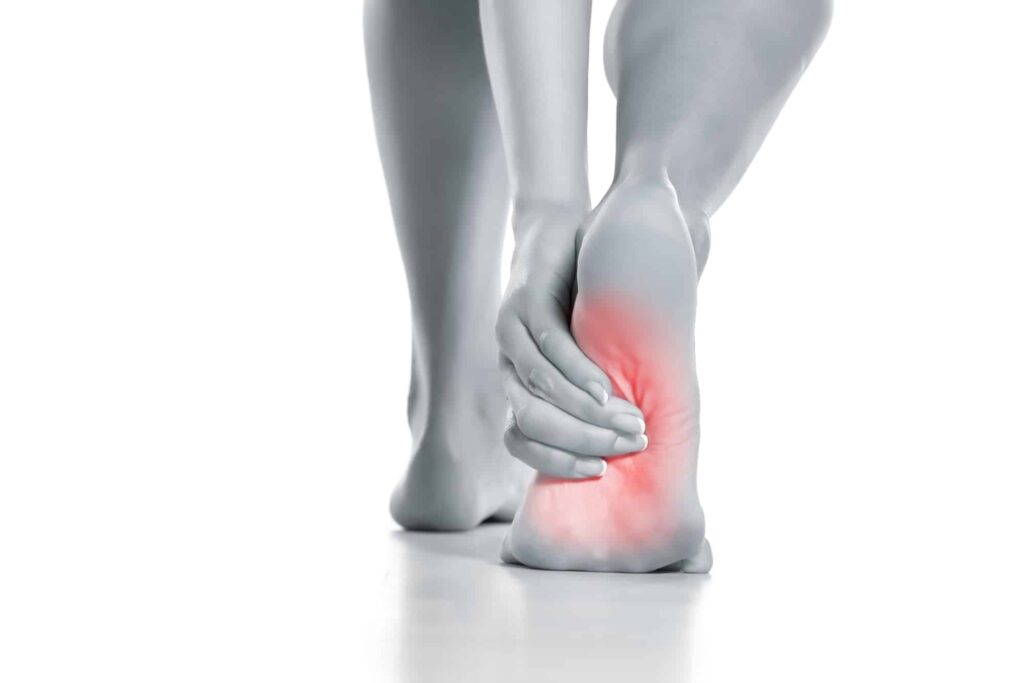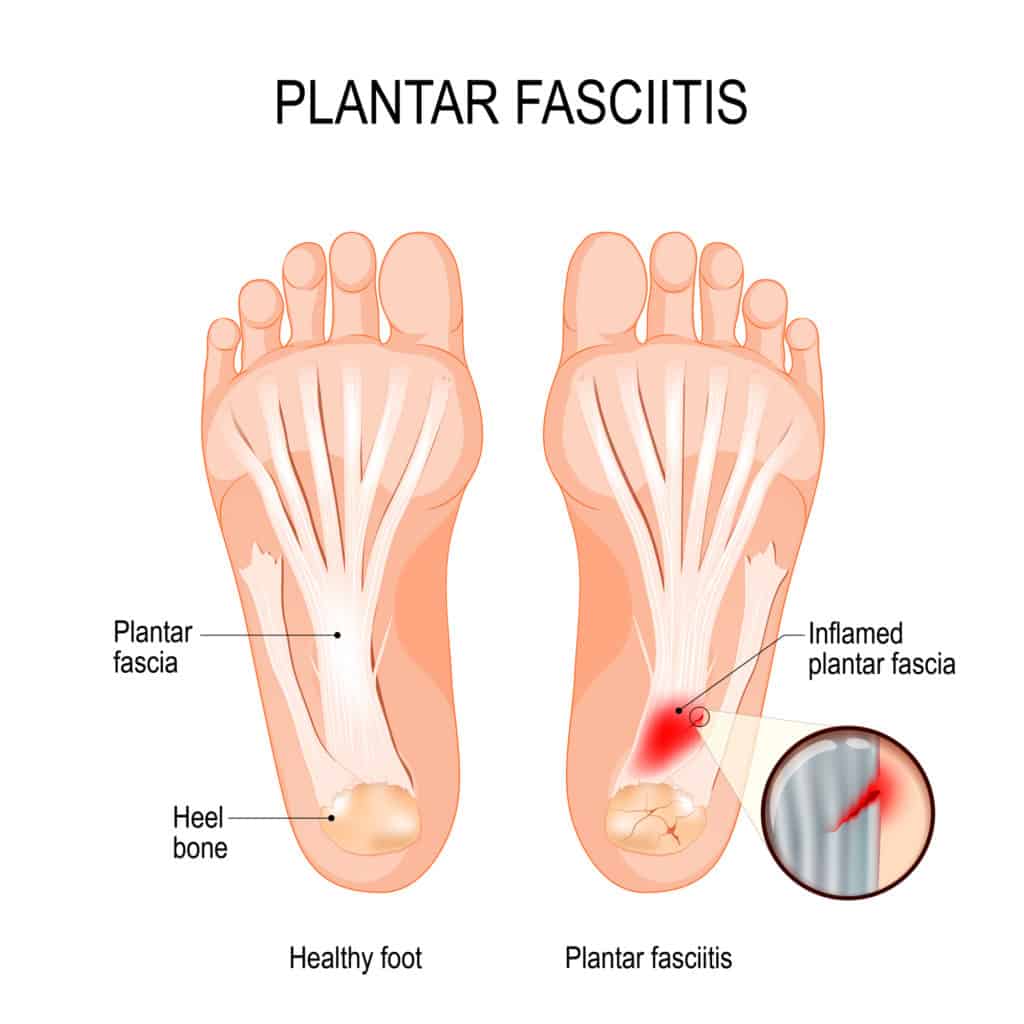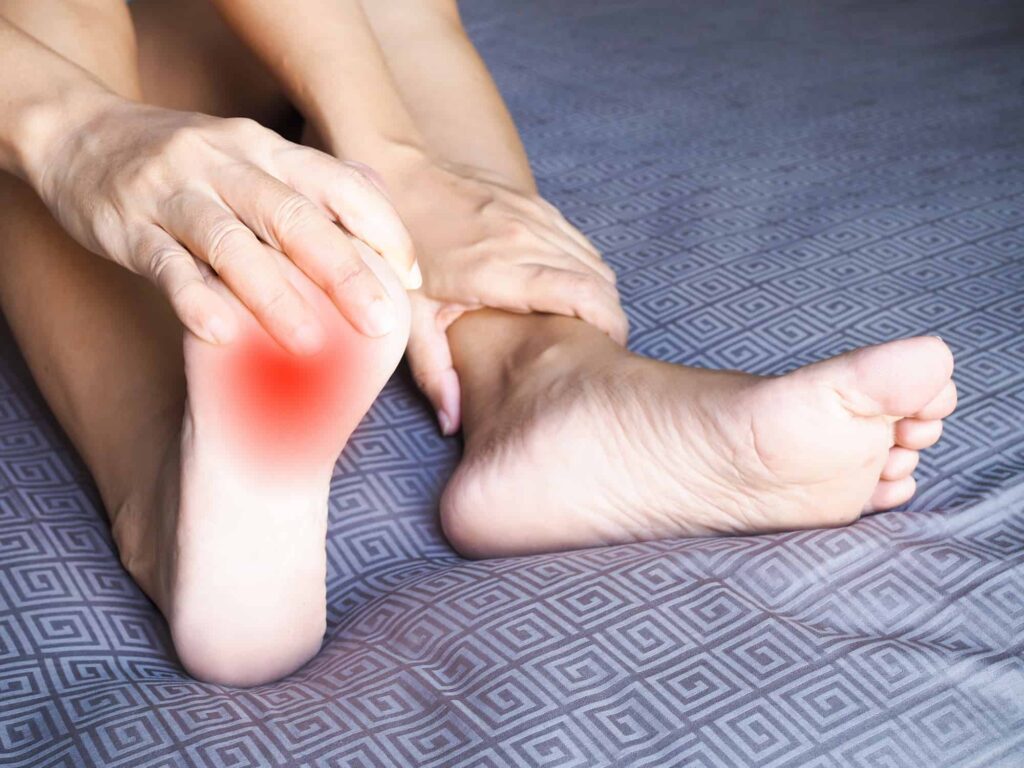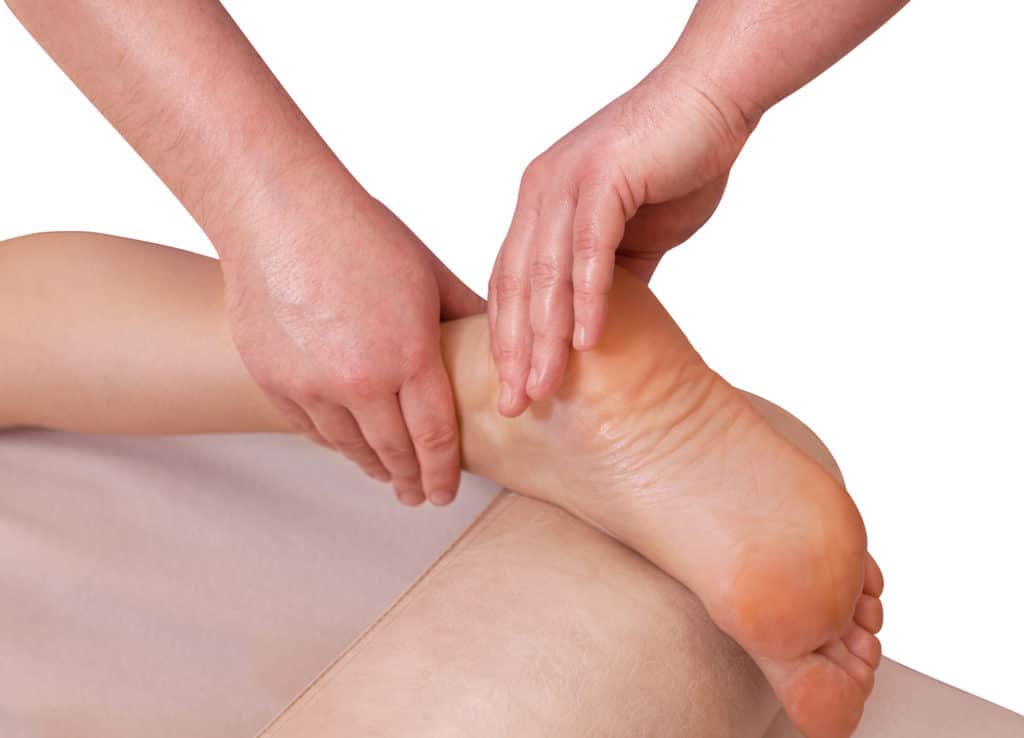
Have you got heel pain?
We know that suffering from pain daily can disrupt your daily life and prevent you from leading an active and healthy lifestyle.
For example, experience regular pain in the heel of your foot. It could be Plantar Fasciitis, inflammation of the plantar fascia ligament.
However, it’s never a good idea to diagnose yourself with anything over the internet, so we recommend a consult with physical therapy to diagnose and fix this condition if you suspect that you might have it.
Regular physical therapy sessions can relieve the pain and inflammation if you have plantar fasciitis.
But surgical intervention might be necessary in severe and/or chronic cases. But surgery for plantar fasciitis is only considered for severe chronic cases that have lasted for more than six months.
In addition, surgery can be risky because it can damage the nerves and develop chronic pain after the operation, so it should only be an option after you’ve exhausted all other forms of treatment.
In this blog, we examine plantar fasciitis, its symptoms, causes, and treatment – the main one (and most effective) being physical therapy.
More Blogs From RPM Physical Therapy:
What Is Causing My Upper Back Pain?
What Is Plantar Fasciitis?
The main symptom of plantar fasciitis is experiencing pain at the bottom of your heel. The plantar fascia is a thick ligament that links the heel and the front of the foot.
It helps you walk by supporting your foot’s arch and works as a shock absorber. It is one of the more common orthopedic conditions that we treat. Why? There is no clear cause for this condition.
But studies suggest that the plantar fascia ligament undergoes immense wear and tear over the years, sometimes leading to an actual tear in the ligament.
Consequently, patients who suffer from this condition have inflammation, stiffness, and pain in the heel of their foot.
What Are The Main Symptoms Of Plantar Fasciitis?

The main symptom that most patients with plantar fasciitis report are pain at the bottom of the heel or the mid-foot area between the heel and the ball of the foot.
While plantar fasciitis mostly occurs in a single foot, it may also appear in both simultaneously, but this is rare.
The pain associated with plantar fasciitis is usually gradual and develops over time. But the intensity tends to vary from dull to intense.
Some patients also feel an arching or burning sensation on the lower part of their heel that radiates outwards. In most cases, the pain is more intense in the mornings when you step out of bed or remain sedentary for a long time.
Some patients report a “stabbing” pain in the heel of their foot when they get out of bed in the morning.
Since there is often stiffness in the heels, climbing stairs can also be a challenge with this condition.
Plus, if you remain on your feet for extended periods, the pain and the level of inflammation can intensify.
Most patients don’t feel pain when they’re inactive. Instead, they feel it when they stop and rest.
What Causes Plantar Fasciitis?
And Who Is At Risk?

It’s a common misconception that plantar fasciitis develops due to heel spurs. That isn’t true, but the connection still lingers in many people’s minds.
Instead, the condition mostly occurs due to overuse and overstretching of the plantar fascia ligament.
Any injury or tear to this ligament can lead to the condition. The structure of your foot may also put you at a higher risk of developing the condition.
But in the general population, men and women in the 40–70-year-old age group are at the most risk of developing plantar fasciitis due to degeneration.
However, we do tend to see it in women more than men. Also, pregnant women are at higher risk of developing the condition or a flare-up of symptoms in the latter part of their pregnancies.
What Are The Risk Factors?
Aside from pregnant women and adults aged 40-70, certain situations put you at higher risk:
- You suffer from obesity or are extremely overweight, which causes extra pressure on the plantar fascia ligament. This increased risk is more so for those who suddenly gain weight.
- You are a marathon or long-distance runner.
- You work in a profession where you must remain on your feet for many hours, like working in a restaurant or factory.
- You suffer from structural deformities like flat feet or raised arches or have taut Achilles tendons that link the calf muscle to the heel.
- You wear ill-fitting footwear that offers minimal support to the foot arches.
Treating Plantar Fasciitis

In most cases, treating heel pain with ice, rest, and wearing more supportive footwear is often enough to heal the condition.
But if these remedies are ineffective, your doctor may suggest anti-inflammatory medication, steroid injections, or topical corticosteroid ointments on the heel – followed by treatment with a mild electrical current to move from the skin to the muscle.
However, these treatments are rarely necessary because physical therapy for plantar fasciitis is a much more effective and less invasive treatment.
Physical therapy is among the most common and popular treatments for treating plantar fasciitis pain.
We help to extend your Achilles tendon and the plantar fasciitis ligament. We also guide you through exercises to strengthen the muscles in your lower leg, which will improve your gait (walking pattern) and reduce pressure on the plantar fascia ligament.
Treatment sessions for plantar fasciitis are customized for you depending on your specific set of symptoms. Still, they’re likely to include the following:
Stretching exercises:
The stretching movements we guide you through during physical therapy sessions help alleviate and may also prevent plantar fasciitis flare-ups.
In particular, stretching the plantar fascia ligament and the calve muscle will loosen them and relieve pain in the heel.
When you’re undergoing treatment for plantar fasciitis you need to abstain from high-intensity workouts like running, to promote the healing of the ligament. That doesn’t mean you have to give up exercising.
Instead, choose low-impact exercise like walking or swimming to ensure you can still stay fit and healthy without aggravating the plantar fascia ligament.
You should only begin running and other high-intensity workouts again when we give you the go-ahead that your ligament has completely healed.
Before any workout, you should stretch well to prevent a reoccurrence of the condition.
The stretching movements we teach you are convenient to perform and only require easily accessible props like a foam roller or chair, so they’re easy to do at home.
Learning and practicing these stretches regularly will help to heal the condition and prevent it from reoccurring.
In cases where continuous pain and regular treatment do not work, we might prescribe shock wave therapy.
The process of shock wave therapy involves sending sound waves into the affected heel section to promote the healing of the ligament.
Some of the side effects associated with this treatment include:
Bruising in the heel area
Swelling and numbness in the heel
Pain in the heel after the treatment
However, this is not the most efficient treatment for alleviating symptoms. Traditional hands-on and movement-led physical therapy is usually the most effective for most patients.
Getting Help With Plantar Fasciitis

The most important thing to remember with plantar fasciitis is DO NOT IGNORE IT. It’s too easy to ignore minor aches and pains and hope they’ll go away alone.
Most of the time, they don’t. In fact, they often get much worse and sometimes require surgery after the issue has been ignored for 6+ months.
Lots of patients who have plantar fasciitis who just try to “suck it up” and get on often completely change how they walk by avoiding putting pressure on the heel of the foot, but this can lead to a whole host of other problems like knee pain and hip problems, so don’t do that either.
Just come see us – we can find and fix the root cause fast and get you back to doing what you love.
The good news is we can offer you a Free Physical Therapy Discovery Session at RPM Physical Therapy to learn more about what we do and how we can help you with plantar fasciitis pain.
Our PTs are foot and ankle specialists and treat patients with plantar fasciitis all the time. After your free session, you’ll know exactly what is happening inside your foot.
But you need to act fast. We only release a limited number of these sessions monthly, so get your book now if you want to get rid of your foot pain quickly. Book yours now.
Dr. Jonathan Ruzicka is a Manual Therapist whose experience as a private therapist for professional athletes drove him to further his education attaining unparalleled skills in tissue mobility work, performance based rehab, injury prevention, myofacial release and joint mobilization to optimize human performance.
- Physical Therapy for Oak Ridge North Residents Near The Woodlands - November 7, 2025
- 5 Lower Back Pain Stretches to Ease Your Discomfort - August 23, 2024
- How to Avoid Foot and Ankle Pain and Stay Active! - July 26, 2024


